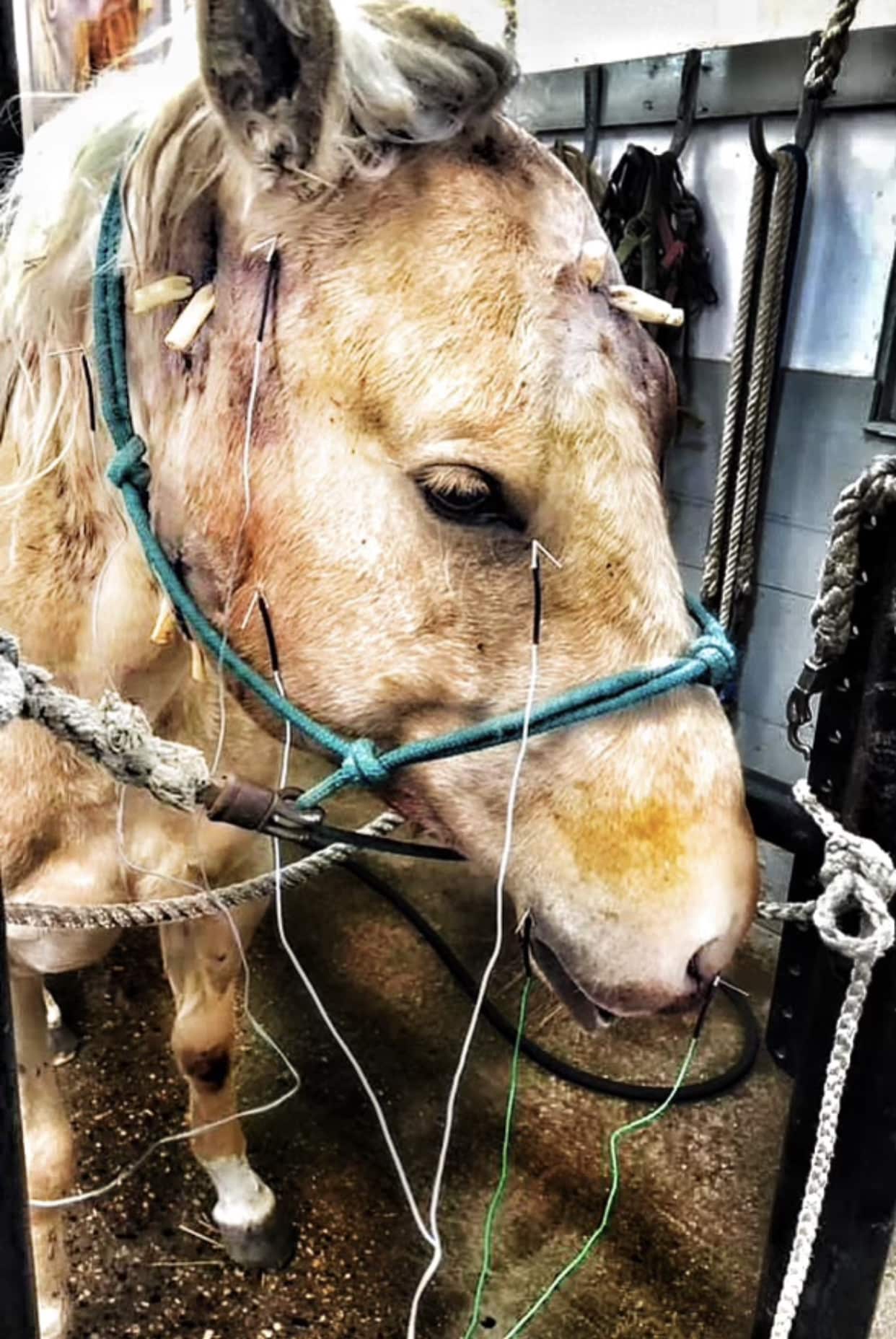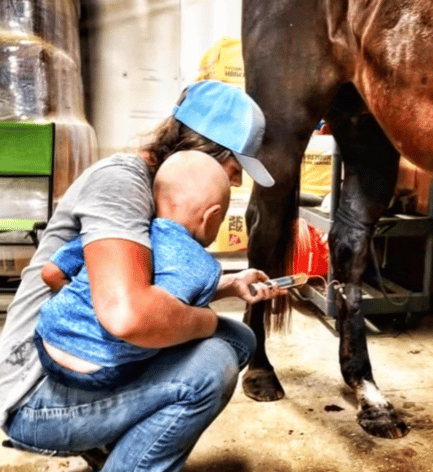
Schaefer Vet Service: Acupuncture

[Photo: submitted by Dr. Kelly Schaefer]
As medicine evolves there are more technology and advances available to treat various conditions, especially musculoskeletal injuries and pain. Joint injections are often the go-to for any musculoskeletal condition. While these are extremely effective and have their place, they may not always be the best option. There are other options to extend the life and career of the horse and potentially reduce the amount of medications used.
Herbal treatments and acupuncture have been around for more than three thousand years. During this time acupuncture has been used to effectively care for back and musculoskeletal pain. Research today has found that the acupuncture points that early Chinese practitioners mapped out correlate with areas on the body that have a high density of nerve endings, lymphatic vessels, and arterioles. Stimulation at these points produces both local and systemic effects for the horse.
There are a variety of ways to stimulate acupuncture points. The most common method is the dry needle technique where flexible stainless-steel needles are inserted into through the skin into the acupuncture point. Needle length varies depending on the location of the point. Additional techniques include moxibustion which is warming of the needles, electroacupuncture where electrodes are attached to the needles to send a weak electric current through the point, and aquapuncture in which the points are injected to allow for prolonged stimulation of the point.
Acupuncture can be used as a sole treatment or adjunct to a current pain management plan. The advantages of acupuncture include minimal unwanted side effects, it is typically well-tolerated by horses, it is noninvasive, and provides a drug-free treatment option. In addition to these advantages for musculoskeletal pain, other conditions can benefit from acupuncture. These include gastrointestinal disease, neurological disorders, reproductive issues, heaves, Cushing’s Disease, skin conditions, and others.
While acupuncture is an excellent tool, it is also important to align expectations with reality; this is the hardest part of utilizing acupuncture and herbals. We live in an instant gratification world. Acupuncture will provide an immediate release of endorphins, but it is transient. To effectively treat any condition, the horse will need at least three treatments over the course of four to six weeks. After the initial course, the horse will likely require maintenance sessions for a period of time. These sessions will typically become less frequent over time. As a general rule, the longer the condition has been present, the longer the treatment course will take.

[Photo: submitted by Dr. Kelly Schaefer]
Acupuncture/herbal medicine is not cookie cutter medicine. There is no one size fits all approach. Every practitioner has their own method. For example, in my practice each horse will need to be examined with a Western medicine diagnosis first. This is crucial to know the extent of arthritis, disease, etc. Next, the acupuncture exam is conducted. This is vital to get the correct pattern diagnosis.
After the diagnosis is made, the appropriate acupuncture points are utilized. For the first session, the horse may only tolerate a few needles. Each session will build on the progress made by the horse as well as what they are willing to accept. In addition, herbal remedies for each condition can expedite results.
Western medicine is the foundation of veterinary care for horses, but acupuncture and herbal remedies can be an excellent supplement treatment option for a variety of conditions.

Dr. Kelly Schaefer, Burlington, ND, owns and operates Schaefer Veterinary Service, a mobile large animal vet clinic that serves the Burlington and Minot area.



